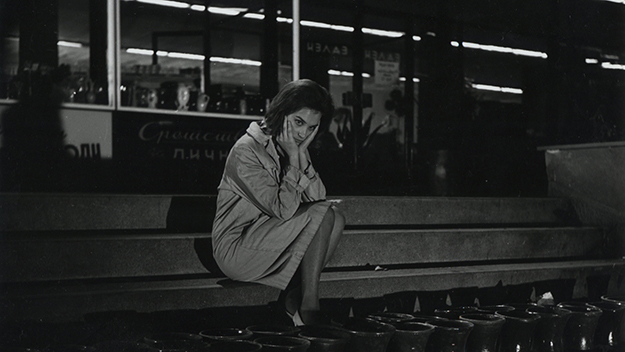Review: Black Wave to White Ray - Yugoslav Films of the 1960s
This article appeared in the September 14, 2023 edition of The Film Comment Letter, our free weekly newsletter featuring original film criticism and writing. Sign up for the Letter here.

Strange Girl (Jovan Živanović, 1962)
The works presented by the Museum of Modern Art in the series Black Wave to White Ray: Yugoslav Films of the 1960s feel like strange dreams of an in-between time and place. These films capture the uncertainties of a country that, after the horrors of World War II, had struggled for its independence and was supposedly thriving as a socialist union of six republics, which would nevertheless violently break apart only 30 years later. The term “Black Wave” was coined for the way these films look at Yugoslavia through dark, cynical lenses, much to the chagrin of the government. The young filmmakers of that movement were prepared, if not eager, to question what had been presented as the ideal state, one in which workers would finally be recognized for the true value of their labor and rebuild the country into a communist utopia.
Inspired by the adventurous style and existential leanings of the French New Wave, as well as the rawness and documentary impulses of Italian Neorealism, Black Wave filmmakers took to the streets and farms, cameras in hand, to depict the reality of life in the various republics that made up the nation under the dictatorship of Josip Broz Tito. (He would be elected president-for-life in 1974). Simply stepping outside and observing real people made it evident that not all was well in the state of Yugoslavia. The playful and ferocious When I’m Dead and Pale (1967), directed by Živojin Pavlović, follows a dashing, mischievous young man named Jimmy Barka (the sensuous Dragan Nikolić in a star-making role) as he looks for work as a singer. The film begins in the desolate Serbian countryside and follows the would-be troubadour as he makes his way to Belgrade, the capital, only to end up right where he began: poor as ever and looking for manual labor alongside hundreds of other disillusioned men. “If our comrades in the war could starve, so can we,” he unhelpfully repeats to each girl he encounters on his journey and inevitably disappoints, refusing to adapt to the demands of a country where the traditional songs about love and the nation that he loves to sing have given way to local and even British pop music.
Although When I’m Dead and Pale follows the adventures of a womanizer, it is just as interested in the women that Jimmy seduces and discards—their jobs and financial circumstances are all fleshed out with care and drive their decision to welcome Jimmy into their lives. Indeed, Black Wave filmmakers were very attentive to the plight of women in Yugoslavia. In Jovan Živanović’s philosophical and poetic Strange Girl (1962), the titular girl, Minja (played by the stunning Špela Rozin), is considered odd because she is vocal about the many forces—from traditional family values to new ideas about sexual liberation to her own desires and fears—pulling her in different directions. En route to Belgrade for university, she meets an older man on the train and spends the night with him without much enthusiasm, refusing to play by his old-fashioned rules: why should they have to meet again simply because they slept together? Later, when she meets and falls for a more progressive and anti-establishment student, her cynicism is challenged; she ends up marrying him and makes sacrifices for the sake of his ambitions to aid in the country’s development. Živanović shows us how both modernity and tradition entrap women in their own ways.
Vatroslav Mimica’s haunted Monday or Tuesday (1966) is a more abstract, dreamlike film, with a style reminiscent of Agnès Varda. When not working, divorced journalist Marko (Slobodan Dimitrijević) wanders flaneur-like through Zagreb, in the middle of (but detached from) the whirlwind of the city symphony, tormented by flashbacks to his childhood and World War II, along with disturbing dreams and recollections of lost loves. “I feel like a traitor,” he says. “I can’t be cheerful.” Mimica’s poetic visual style employs striking blue, red, and yellow filters to differentiate between the present, the past, and Marko’s fantasies. The film presciently communicates an inescapable anxiety about the still-recent traumatic history (footage of concentration camps contrasts shockingly with that of happy-go-lucky citizens on busy commercial streets) and the uncertain future of a young country too eager to move on and ahead.
Manuela Lazić is a French writer and filmmaker based in London. Her writing has appeared in The Ringer, The Guardian, Little White Lies, Animus Magazine, Cinema Scope, IndieWire, and other outlets.







